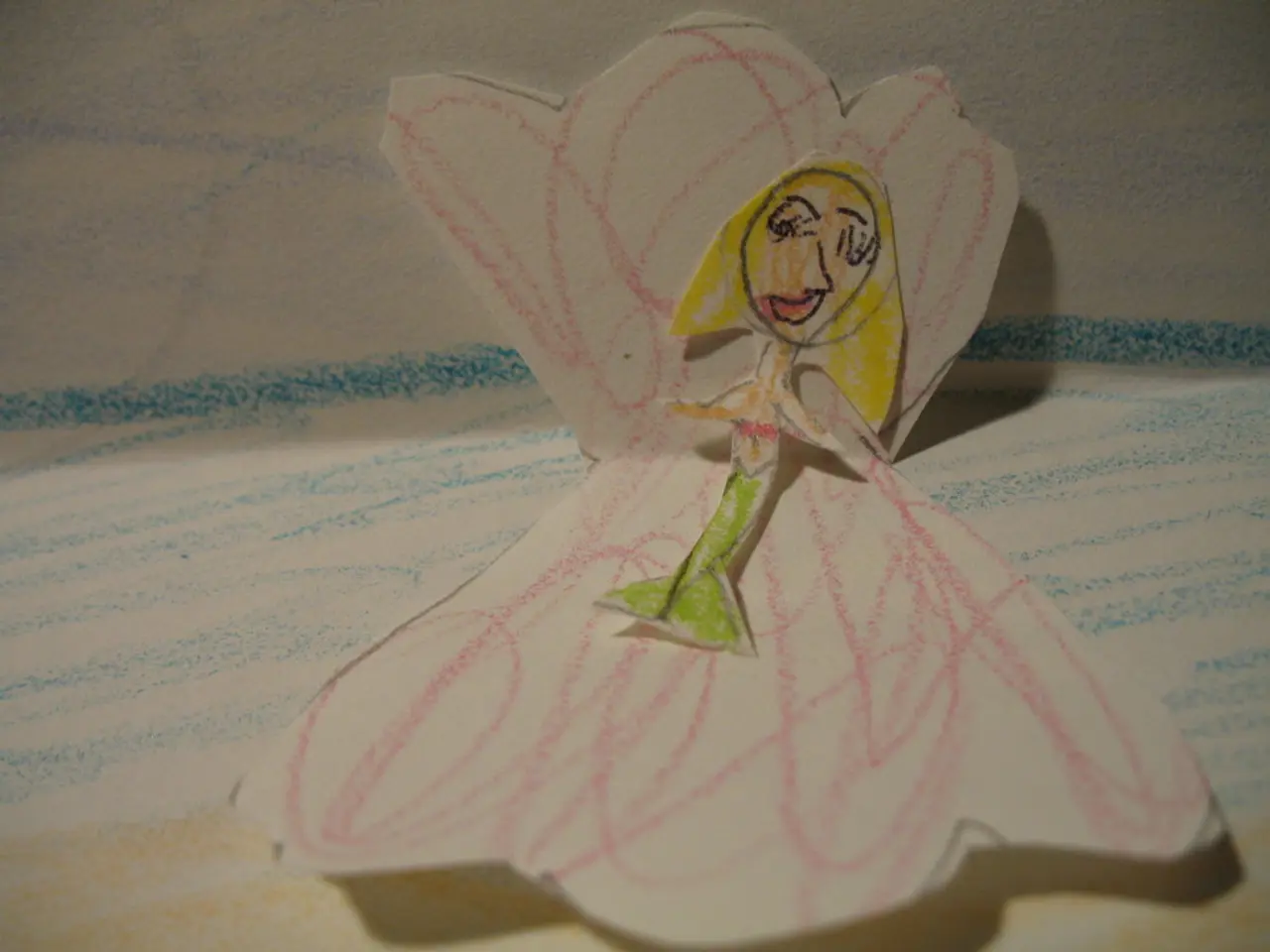Utilizing Embossing Powder: Elevate Your Craftwork Effortlessly
Embossing powder is a versatile tool in the world of crafting, creating raised, glossy textures on various surfaces. Here's a step-by-step guide on how to use embossing powder effectively in your projects.
Step 1: Preparing the Design
Start by stamping or drawing with embossing ink, a clear and sticky substance, on your chosen paper or surface. This ink stays wet longer, allowing the embossing powder to adhere properly [1][2].
Step 2: Sprinkling the Embossing Powder
Generously sprinkle the embossing powder over the wet inked areas. Ensure that the entire inked area is covered for clean results [1][2].
Step 3: Removing Excess Powder
Tap off excess powder and use a small brush to remove stray powder particles that are not on the inked design [1][2].
Step 4: Heating the Powder
Heat the powder using a heat tool, such as an embossing heat gun. Hold it a few inches away and move it slowly until the powder melts and fuses into a shiny, raised finish. Be careful not to overheat or hold in one place too long to prevent burning or smudging [4].
Special Effects
Clear Embossing Powder
Use clear embossing powder for a resist technique combined with ink blending or watercolor backgrounds. The embossed areas resist ink or paint, creating textured designs [1][5].
Double Embossing
Try double embossing, which combines two embossing powders or emboss resist with emboss folders for dimensional effects [3].
Colored or Specialty Powders
Use colored or specialty powders (like glitter or metallics) tailored for your theme or desired finish (e.g., white powder for bright, bold effects) [5].
Embossing with Stencils
When embossing with stencils, apply embossing ink through the stencil, then powder and heat. This creates crisp, textured patterns ideal for cards, journals, and more [5].
Cleaning Up
Make sure to brush off stray powders carefully before heating to keep your design sharp and avoid muddy-looking crafts [2].
By following these techniques—using sticky embossing ink, carefully applying and cleaning off powder, and heating gently—you can achieve beautiful raised, glossy textures that enhance cards, scrapbook pages, journal covers, and many other craft projects.
For beginners, it's recommended to start with simple designs and practice with basic shapes to familiarize yourself with the heat gun and different powders. Always remember to handle the design while it is still warm can distort or ruin the embossing effect.
For more advanced techniques, consider watching detailed step-by-step tutorials that show tips for emboss resist, double embossing, and use with stencils to expand versatility and creative effects [1][3][4][5]. High-quality paper or cardstock is crucial for successful embossing projects due to its heat resistance, thickness, and quality. Tweezers are important for handling small pieces of hot paper or embossed elements safely and precisely.
Anti-static powder is used to prevent excess static cling during the embossing process, ensuring a clean surface for the embossing powder to adhere only to the stamped impressions. Brushes are useful for cleaning up stray embossing powder and maintaining a clean and professional appearance. Layering different colors of embossing powder can create depth in your designs.
With these tips and techniques, you're now ready to embark on your embossing powder journey and create stunning, raised, glossy designs for your craft projects. Happy crafting!
Incorporate handmade touches to your home-and-garden decor by using embossing powder techniques, such as embossing powder on homemade cards or custom-designed journal covers, adding a touch of luxury to your lifestyle.
For a unique twist on home-and-garden crafts, consider embossing watercolor backgrounds with handmade stamps and clear embossing powder, creating a visually appealing textured finish.






